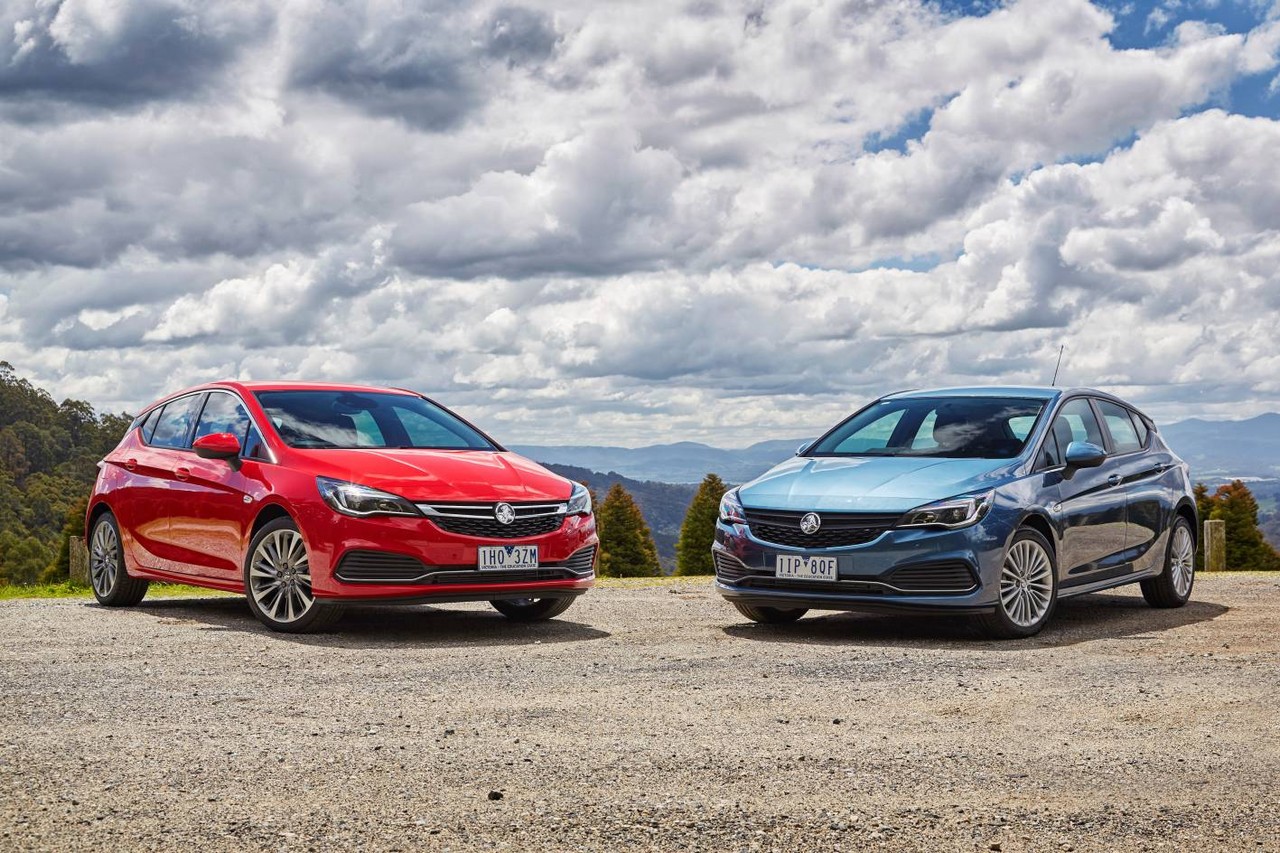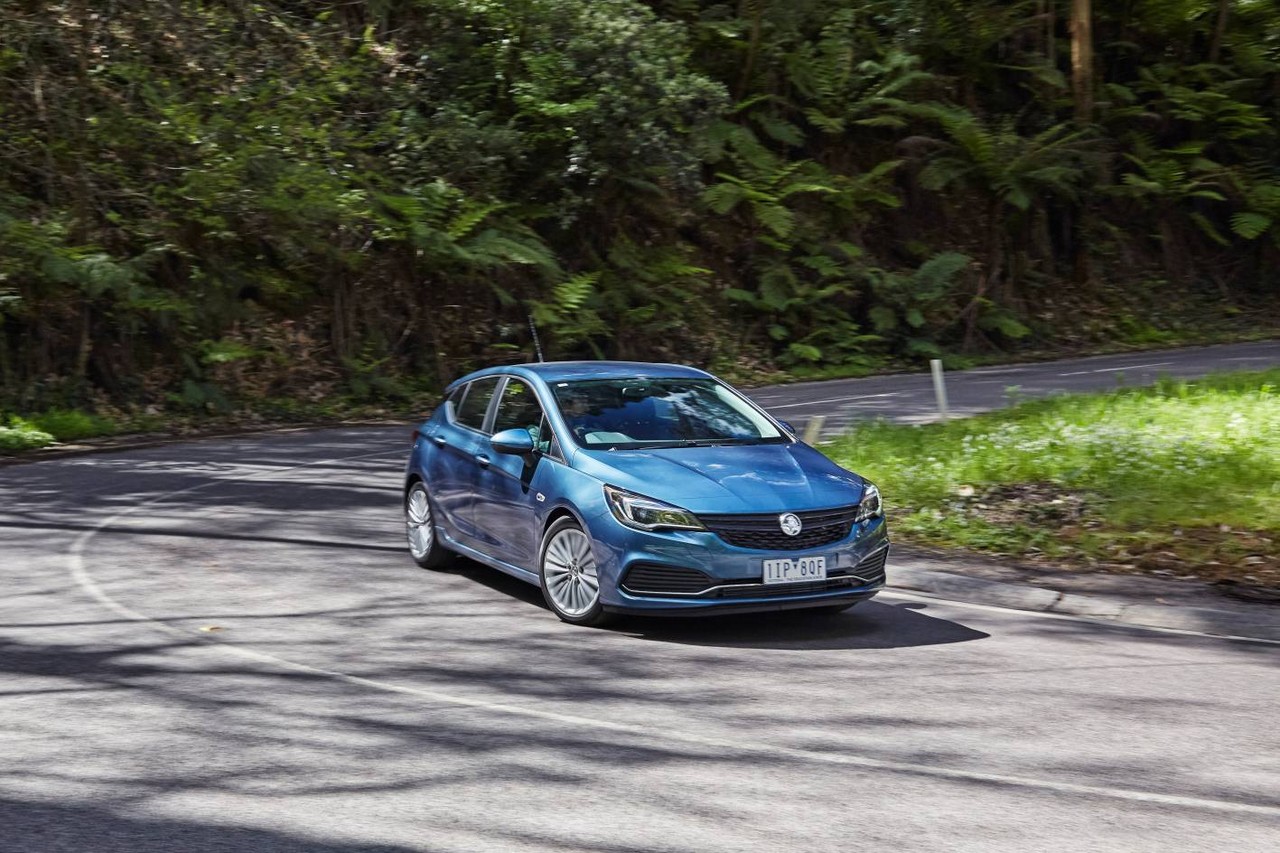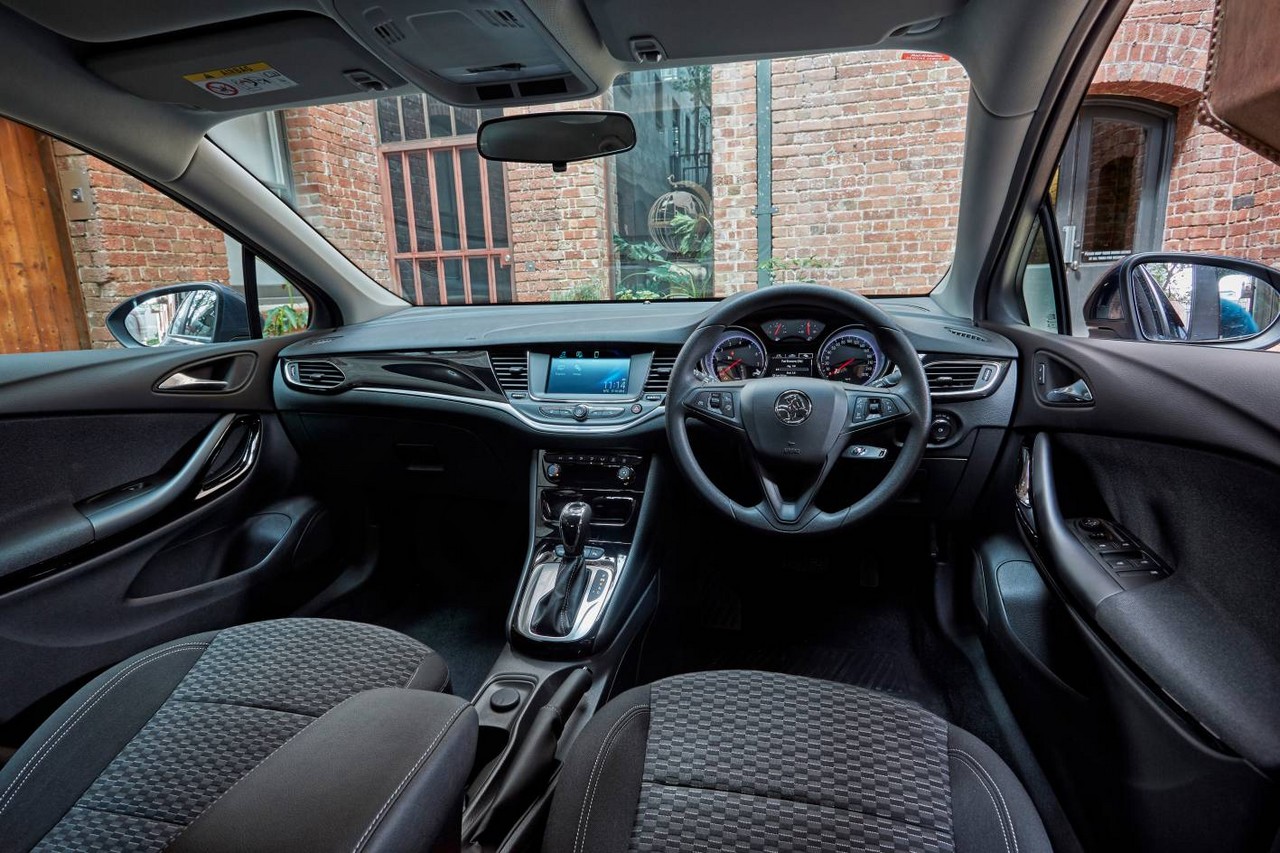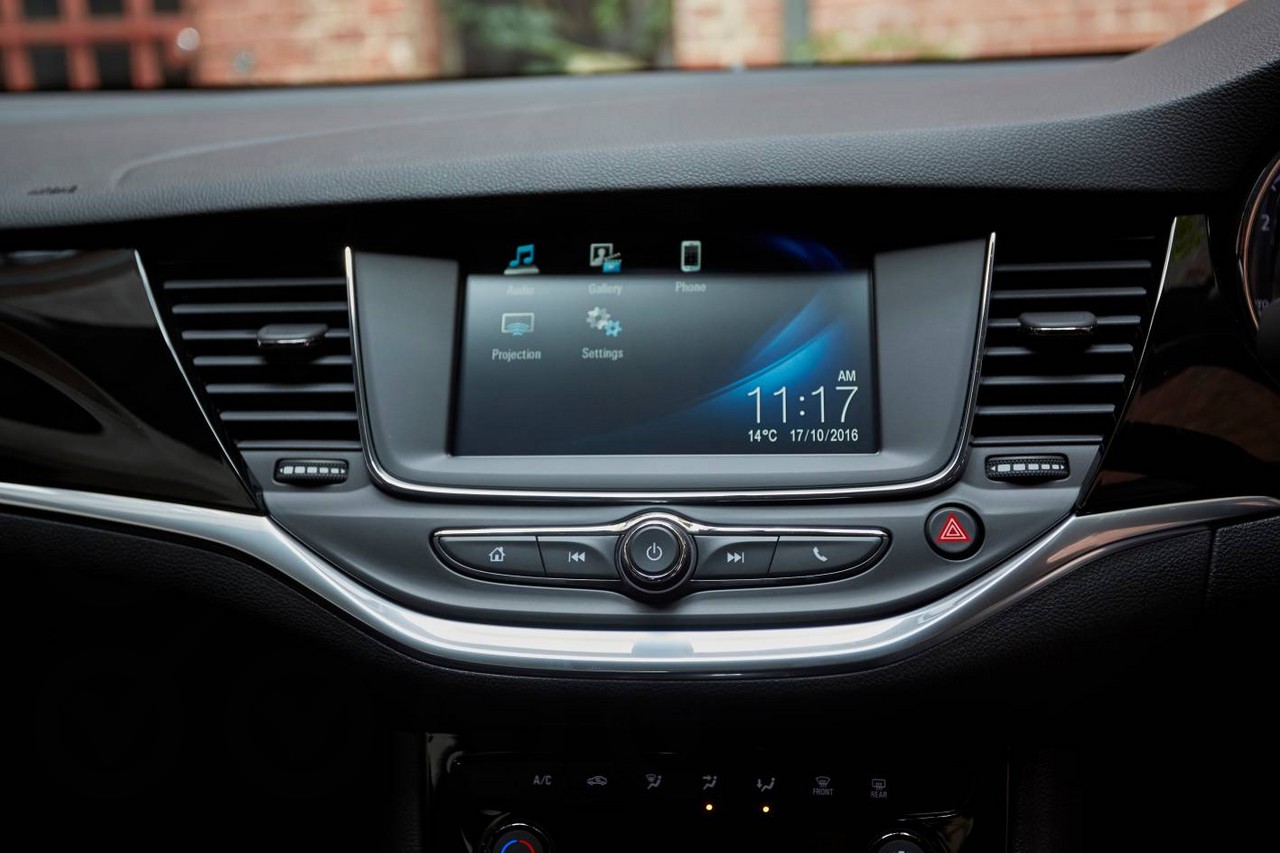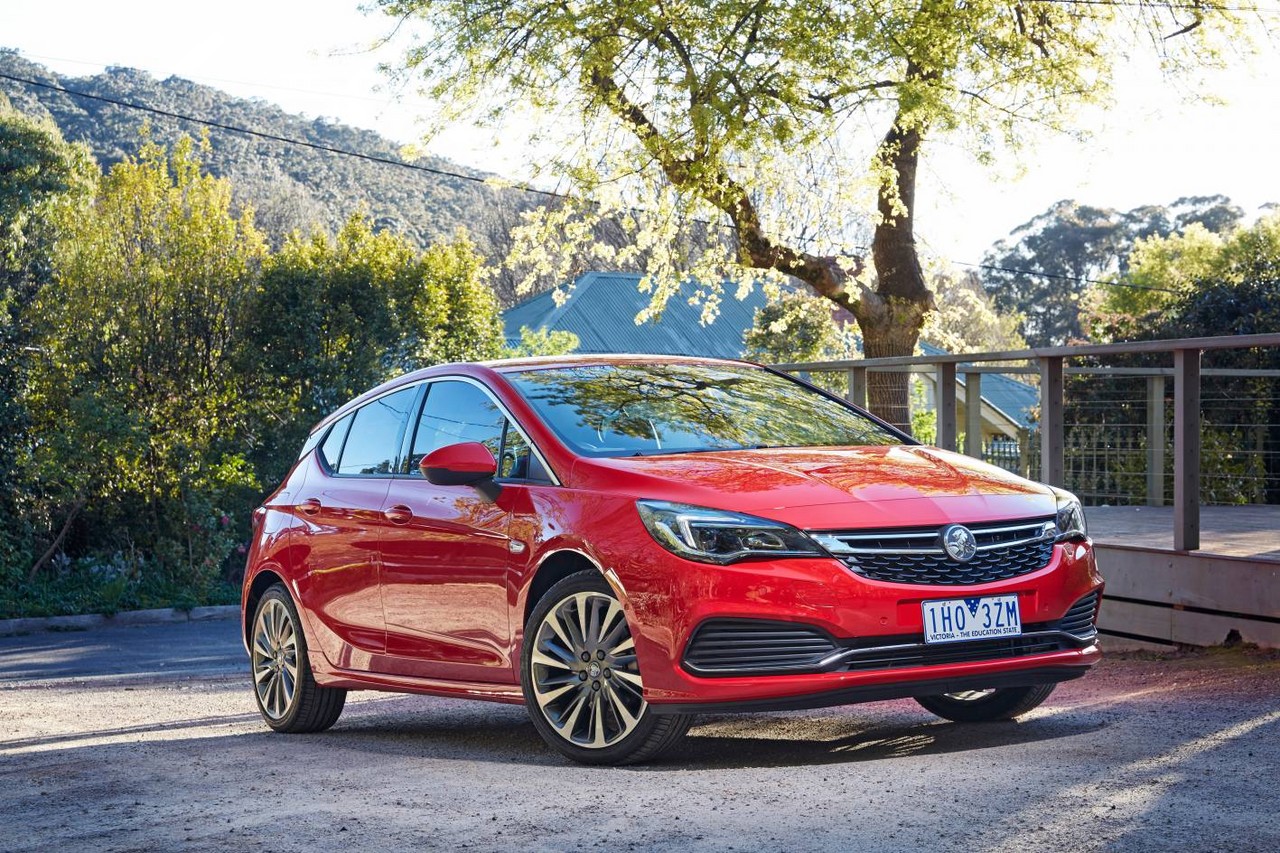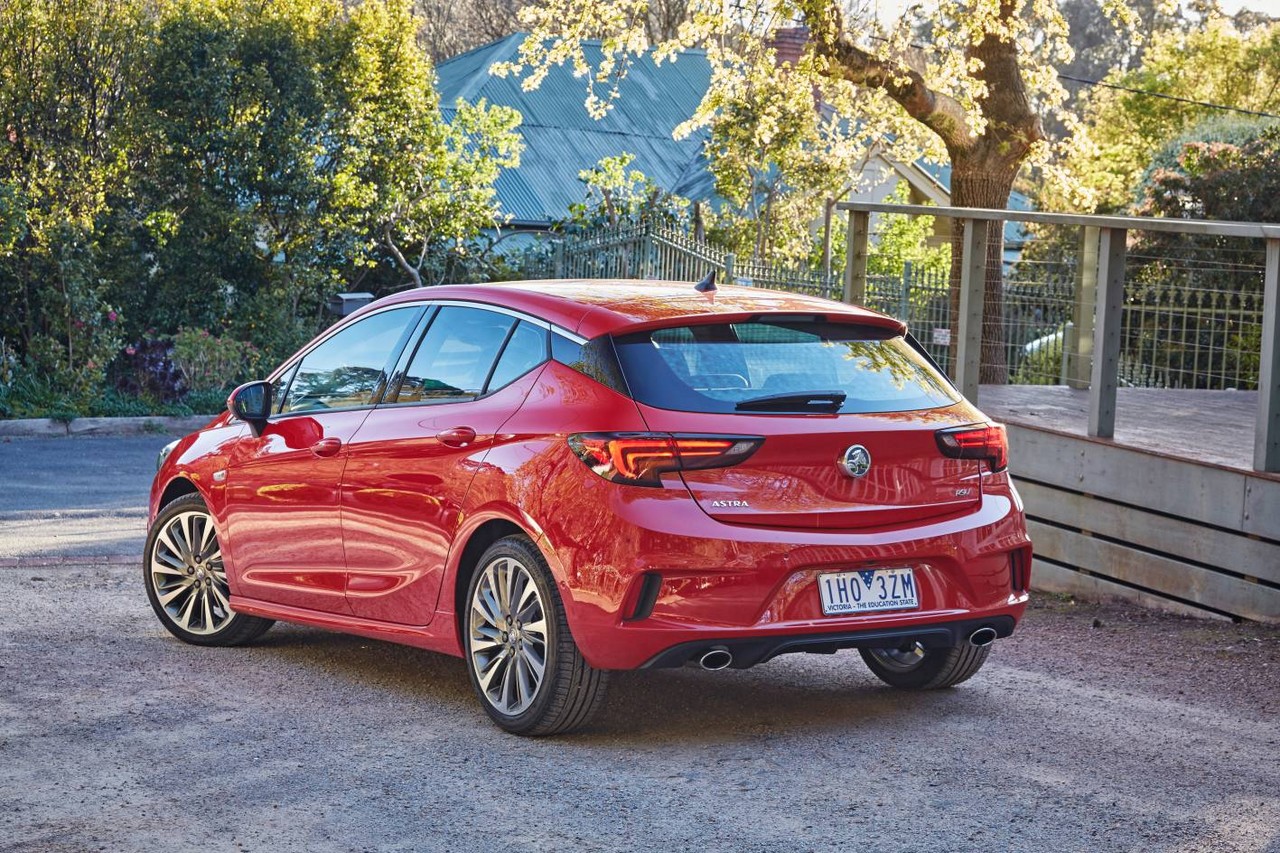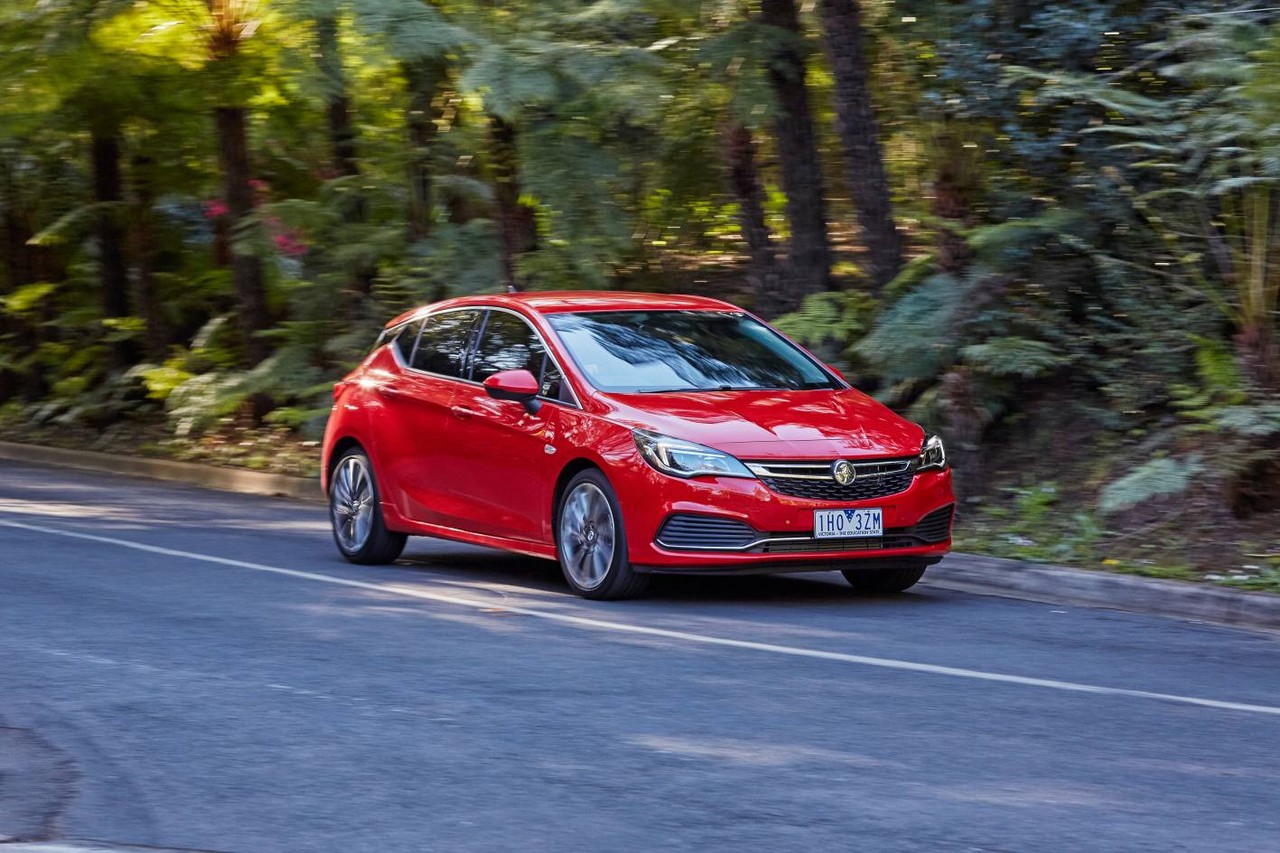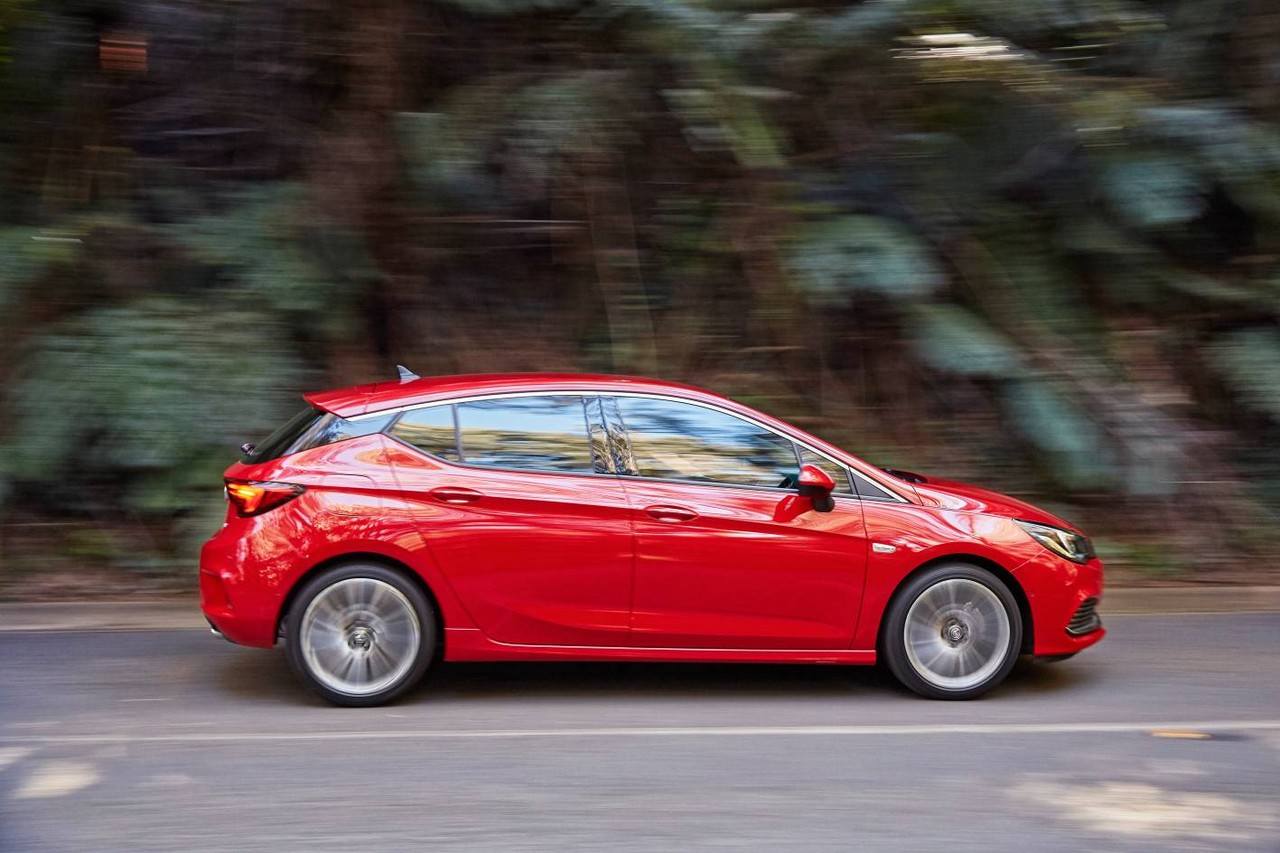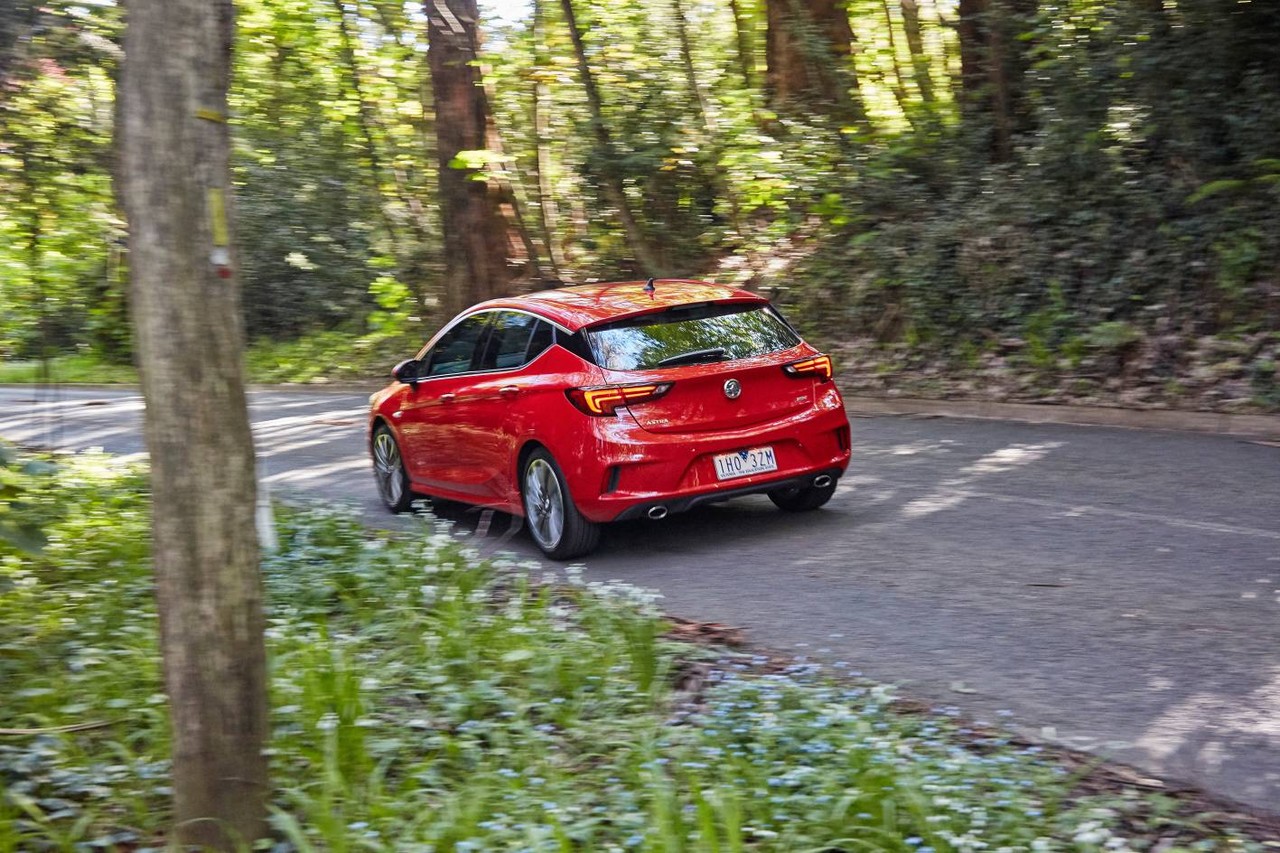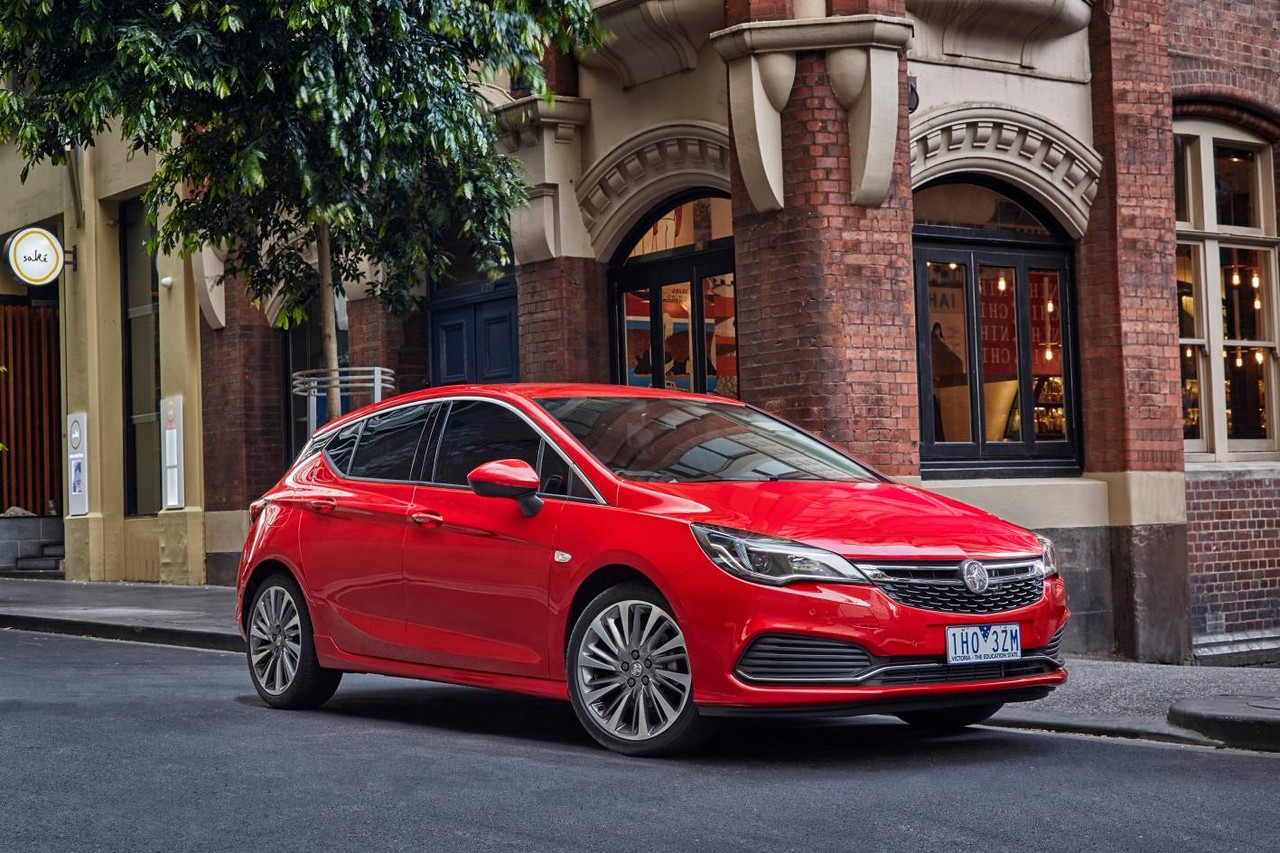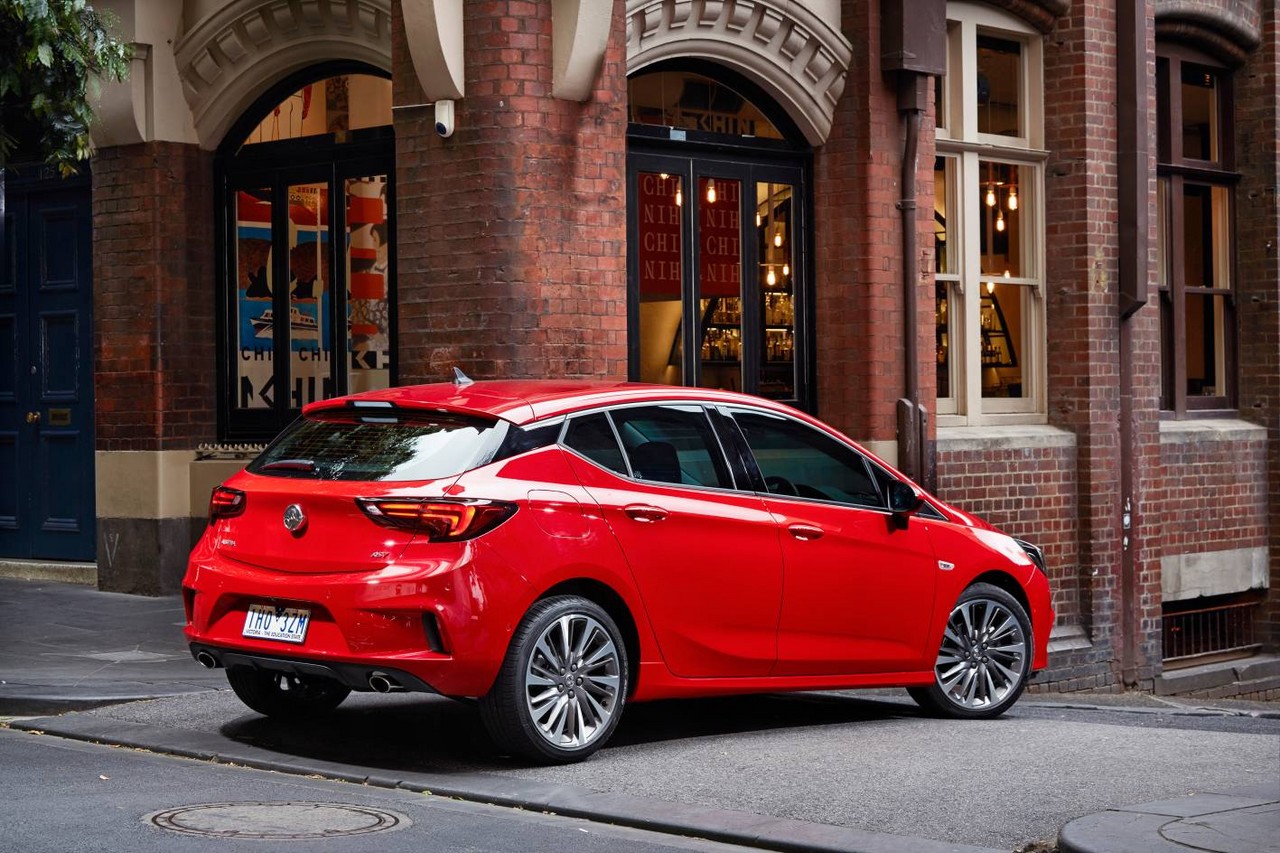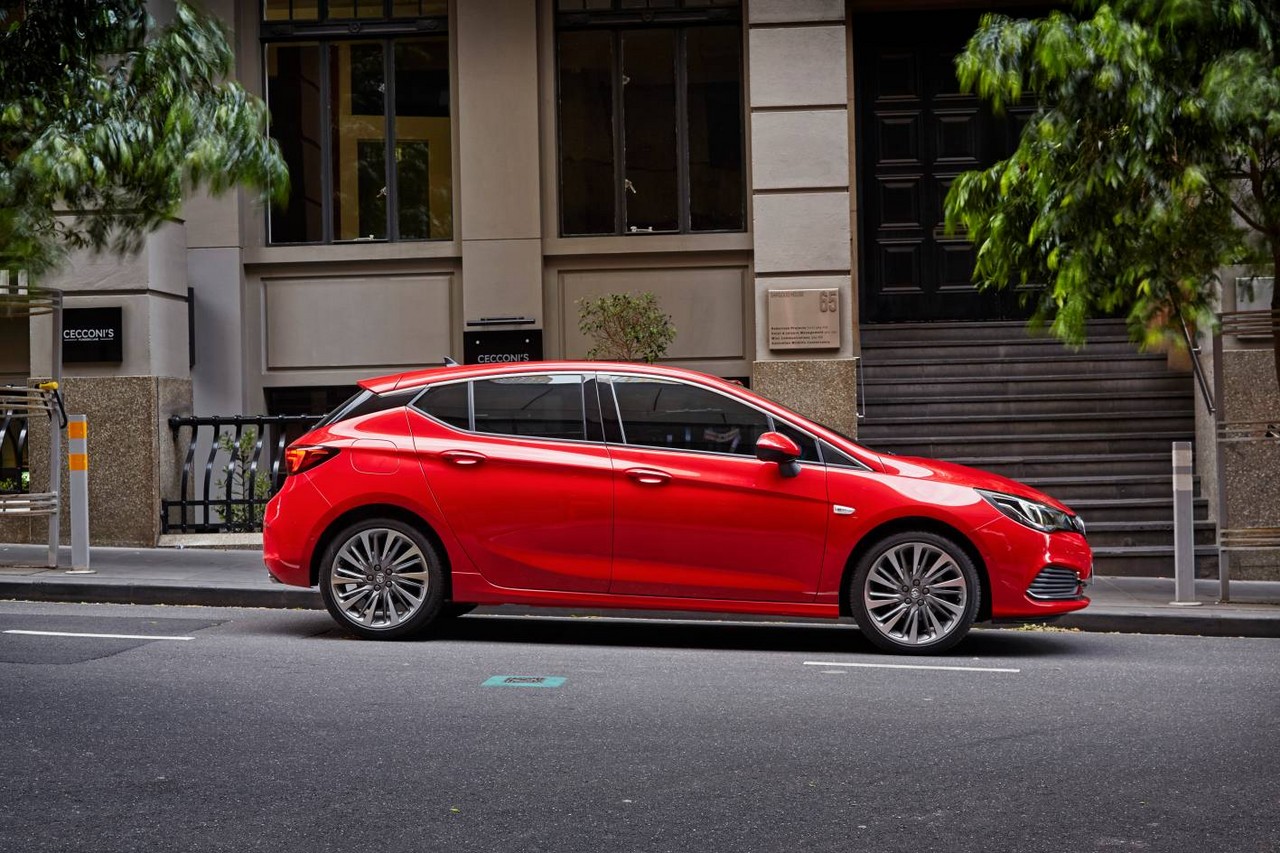
- Willing 1.4- and 1.6-litre turbo petrol engines
- Good occupant space
- High standard of interior fit and finish
- Agile, dynamic handling…
- … but 17- and 18-inch alloy wheels hurt ride quality
- 1.4-litre turbo petrol engine lacks refinement at higher rpm
- Small text for interior buttons is hard to read
- Limited boot space
Overview
Released in Australia in December 2016, the Holden BK Astra was a five-door hatchback. Manufactured at Adam Opel’s Gilwice plant in Poland, the front-wheel drive Holden Astra was powered by 1.4- and 1.6-litre turbocharged petrol engines that were mated to either six-speed manual or automatic transmissions. Furthermore, the BK Astra hatch range consisted of R, RS and RS-V variants (see table below).
B14XFT (LE2) and B16SHT (LWC) engines
For the Astra R, the 1.4-litre B14XFT petrol engine had an aluminium alloy block, an aluminium alloy cylinder head with integrated exhaust manifold, a forged steel crankshaft with fully-floating piston wrist pins, double overhead camshafts with an inverted-tooth camshaft driven chain, four valves per cylinder, variable intake and exhaust valve timing, a single-scroll turbocharger with an electronically controlled bypass valve, direct petrol injection via a high pressure fuel pump (driven by the intake camshaft), coil-20-plug ignition and a compression ratio of 10.0:1.
For the Astra R and RS-V, the 1.6-litre B16SHT engine differed from the B14XFT in that it had a cast iron block with a die-cast aluminium bedplate, a compression ratio of 9.5:1, twin balance shafts and an overboost function which could provide an additional 20 Nm (for a peak torque of 300 Nm) for short periods.
For the B14FXT engine (Astra R) with automatic transmission, a ‘stop/start’ function enabled the engine to shut down when the vehicle was stationary in traffic to reduce fuel consumption. The B16SHT engine, however, had stop/start for models with both manual and automatic transmissions.
| Edition | Engine | Trans. | Peak power | Peak torque |
|---|---|---|---|---|
| R | 1.4-litre B14XFT turbo petrol I4 | 6sp man. | 110 kW at 5000-5600 rpm | 245 Nm at 2000-4000 rpm |
| 6sp auto | 110 kW at 5000-5600 rpm | 240 Nm at 2000-4800 rpm | ||
| RS, RS-V |
1.6-litre B16SHT turbo petrol I4 | 6sp man., 6sp auto |
147 kW at 4700-5500 rpm | 280 Nm at 1650-3500 rpm (Overboost: 300 Nm at 1700-4700 rpm) |
Dimensions
The Holden BK Astra was underpinned by General Motors’ D2XX platform. For Australian-delivered models, the BK Astra achieved mass reductions of up to 130 kilograms relative to its predecessor – the Opel Astra J – through the use of high-strength and ultra-high-strength low-weight steels, compact sub-frames and lighter axles.
The Holden BK Astra was 4368 mm long, 1809 mm wide, 1485 mm tall and had a 2662 mm wheelbase; luggage capacity was 360 litres. Furthermore, the BK Astra had a drag coefficient of 0.285 Cd.
Suspension and steering
The Holden BK Astra has MacPherson strut front suspension with gas-pressure dampers, coil springs and an anti-roll bar. The top mountings of the MacPherson struts were de-coupled to separate the paths of the spring and damper loadings, while the lower L-shaped control arms were made of mass-optimised sheet metal and attached through two bushings to a steel front sub-frame.
The torsion beam rear axle was suspended by one-piece, hollow cast trailing arms and had a built-in anti-roll bar, progressive-rate double conical mini-block springs and gas-pressure dampers. As with the Astra J, the BK Astra’s rear suspension included a Watt’s linkage which consisted of two lateral rods; the outer end of each rod was attached to the lower wheel carrier and the inner ends were connected via ball joints to a central pivot link that was mounted to a small sub-frame connected to the car’s underbody.
The Holden Astra had rack-and-pinion steering with electric power assistance.
Safety equipment
Standard safety equipment for the Holden BK Astra included dual front airbags, front side airbags, full-length curtain airbags, ABS, electronic brake force distribution, brake assist, electronic stability control, traction control, active front seat head restraints and front seatbelts with dual pre-tensioners and load limiters.
As standard, the Holden Astra RS and RS-V were further equipped with a forward-facing camera and the following safety technologies –
- Forward Collision Alert (FCA): if the distance to the vehicle ahead decreased such that a risk of collision was detected, the driver was warned by an audible alarm, a visual warning in the instrument cluster and an LED projection on the windscreen. The driver could adjust the safety distance of FCA to objects with ‘near’, ‘mid’ and ‘far’ settings via a switch located on the steering wheel;
- Automatic Emergency Braking (AEB): operating at speeds between 8 km/h and 80 km/h, Automatic Emergency Braking would be initiated if the driver did not respond to the forward collision warnings; and,
- Lane Departure Warning with Lane Keep Assist: recognised road markings, warned the driver if the vehicle was about to depart from its lane (without having indicated) and gently turned the steering wheel to return the Astra to its lane should it cross lane markings. The steering wheel nudges and alerts, however, would be disabled if the driver was detected to be actively steering, braking, accelerating or if a turn signal was activated. Lane Departure Warning and Lane Keep Assist were active at speeds above 60 km/h.
The Holden Astra RS and RS-V were also equipped with ‘Side Blind Spot Alert’ which uses ultrasonic sensors to scan wide areas around the vehicle at speeds above 10 km/h. If an object was detected in the driver’s blind spot, an optical amber-coloured warning appeared in the relevant door mirror. Furthermore, if the turn indicator was applied towards the direction of the object in the blind spot, the optical LED warning would start flashing.
Euro NCAP testing
In Euro NCAP testing , a left-hand drive 2015 Opel Astra that was powered by a 1.4-litre petrol engine received a five star safety rating which included an 86 per cent adult occupant protection rating and an 84 per cent child occupant protection rating. In the frontal offset test, protection of the driver’s head, thighs, lower right leg and feet were rated as good, but chest and lower right leg protection were rated as adequate (i.e. a slight risk of serious injury). While occupant protection in the side and pole tests were rated as good for all body areas, a half point deduction was applied because the rear door on the impacted side of the vehicle became unlatched.
Brakes
The Holden BK Astra had 276 mm by 26 mm ventilated front brake discs and 264 mm by 10 mm solid rear discs.
Features: Holden Astra R
Standard features for the Holden Astra R included 7.5J x 17-inch alloy wheels with 225/45 R17 91V tyres, a six speaker sound system, Holden’s ‘MyLink’ infotainment system which consisted of a seven-inch colour touchscreen, Android Auto and Apple CarPlay smartphone integration, a digital radio tuner (DAB+), USB and auxiliary (3.5 mm) inputs and iPod integration, ‘Jet Black’ cloth seat trim, air conditioning, cruise control with speed limiter, halogen headlights, LED daytime running lights, a rear view camera, rear parking sensors, 60/40 split fold rear sets, remote central locking, power adjustable door mirrors, power windows, a height and reach adjustable steering wheel, tyre pressure monitoring, a trip computer and an immobiliser.
As standard, the Holden Astra was fitted with a space-saver spare wheel and tyre.
Features: Holden Astra RS
Compared to the Astra R, the Astra RS was further equipped with front parking sensors, rain-sensing wipers, a leather-wrapped steering wheel, proximity key, heated door mirrors, push-button start, an electrochromatic rear view mirror, 12 volt front power socket and ‘Advanced Park Assist’. Active at speeds below 11 km/h, Advance Park Assist could notify the driver when it detected objects within the range of its sensors and, on the touchscreen display, show the relative position and distance of the object to the Astra; an acoustic signal is also used indicated the distance of the object (by increasing its frequency for closer objects).
Features: Holden Astra RS-V
The range-topping Holden Astra RS-V was distinguished by its 7.5J x 18-inch two-tone alloy wheels with 225/40 R18 92W tyres, eight-inch colour touchscreen with satellite navigation, four-way power adjustable front seats, leather-appointed seats, heated front seats, dual-zone climate control air conditioning, heated steering wheel, remote start function and colour digital instrument display. Visually, the Holden Astra RS-V could be identified by its LED tail lamps.
LED matrix headlights
The Holden BK Astra was available with adaptive full-LED matrix headlights (Opel’s ‘IntelliLux’) in which uses 16 LED segments – eight on each side of the vehicle – and the ‘Opel Eye’ front camera to adapt the length and distribution of the light beam to driving conditions. Once the vehicle exits urban areas, the high-beam lighting was automatically switched on and remained on. At driving speeds of 80 km/h, drivers could detect objects at the side of the road around 30 to 40 metres sooner than with conventional halogen or xenon low beam lighting.
Brochure
Related links
- Holden Media: All-New Astra Makes Public Debut (September 2015)
- Opel Media: New Opel Astra (September 2015)
- Behind the Wheel: 2017 Holden Astra R Review
